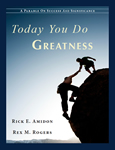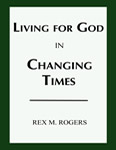I’m in Beirut as I write, my third visit to Lebanon, so I’m beginning to learn a few things about this interesting country and people. Here’s my lengthening list:
--The food is excellent. Hummus, varieties of spiced meats, sweet and to-die-for fruit, which tends to be fresher than what’s available in supermarkets in the States because most of the fruit comes from within the country.
--The children, as all children everywhere, are beautiful. But there’s something about Lebanese little ones that attract my eye every time. They look like black-haired (sometimes curly), dark-eyed, olive-skinned angels.
--Beirut fills a basin around the Mediterranean Sea and quickly climbs the mountain backdrop to the east. Four to six story residences and even larger apartment buildings dot the hillsides offering spectacular views of the city and sea to the west or valleys and mountains to the east.
--The Lebanon Mountains, or Mount Lebanon, run along the central part of the country north to south. The highest point reaches above 10,000 feet. I saw snow patches on several mountaintops during our drive over a pass yesterday. The mountains boast some good ski resorts, are populated by pines (including the ancient Cedars of Lebanon), and a tree-line that can be seen on most of the ranges, meaning the tops are bare, much like California’s southern ranges. Another range called the Anti-Lebanon Mountains runs along the eastern border with Syria.
--The BeKaa Valley is a rich agricultural plain lying between the mountain ranges, is some 75 miles long and up to 10 miles wide. The valley is beautiful and produces much of the country’s farm foods like potatoes and fruits, including grapes with associated wineries.
--Baalbek, an approximately 2100 year old Roman ruins is located to the east and north in the BeKaa Valley. It features incredibly preserved stone works, in particular the temple of Bacchus or Dionysus, the god of wine, ecstasy, and madness. Bacchus is the word from which we get the term bacchanalia, meaning wanton orgies. Add temples to Venus, the goddess of love, and Jupiter, the ruling god, and you get the picture of the activities that took place in Baalbek, which by the way gets its name from the idol Baal. But the architectural antiquity is fantastic to see.
--Lebanon is a country divided by religious sectors. Maronites, Christians, Druze, Muslims, Greek Catholics, Greek Orthodox, and more tend to live in historically defined areas. There’s a history of friction, but there’s also a history of periods of productive and peaceful interaction, like now.
--Lebanon is surrounded by politically powerful neighbors: Israel to the south, Syria to the east and north. When the big powers rattle sabers Lebanon gets caught in the middle.
--Lebanon is a geographically small nation. If you dropped it into Lake Michigan, the country would disappear.
--Lebanese people live in diaspora all over the world. About 4.3 million live in Lebanon. As many as 15 million plus people of Lebanese descent live elsewhere, many known for the business prowess, especially in restaurants.
--Lebanon may have some Bedouin peoples, but there are no deserts in Lebanon, the only Middle East country that can make this claim.
--Lebanon enjoys its French colonial heritage in that children often attend schools structured upon French educational systems and take French courses each year. Many Lebanese speak Arabic, French, and English.
There’s much more. Lebanon’s economy is growing and for now its politics are relatively stable. Lebanon is small but influential, an engaging country, people, and culture.
© Rex M. Rogers – All Rights Reserved, 2011
*This blog may be reproduced in whole or in part with a full attribution statement. Contact Rex or read more commentary on current issues and events at www.rexmrogers.com or follow him at www.twitter.com/RexMRogers.


